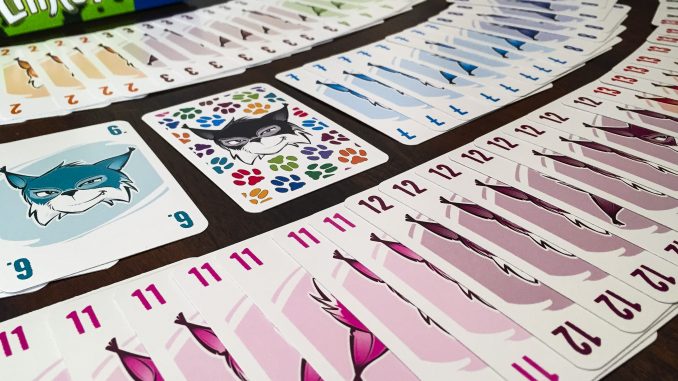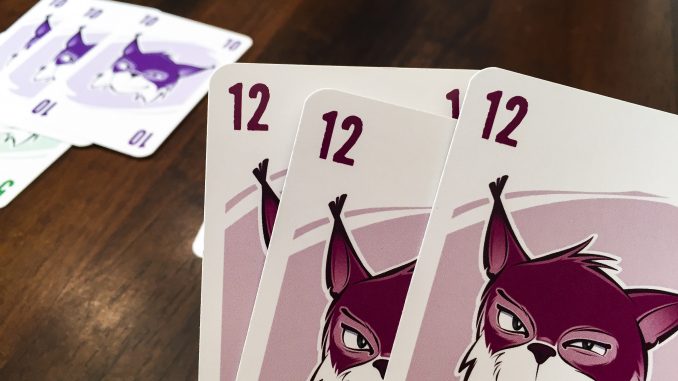
It can be difficult to get family members and non-gamers to play board games, but most people are always pretty open minded when it comes to traditional card games. So having some card games that play similar to a traditional card game can be a great way to ease people in, or at the very least get some gaming in with people that may not be that interested otherwise.
Linko! (I’m only using the exclamation point in the title this one time) is played with a deck of 109 cards, with 8 sets of cards numbered 1-13 and 5 “joker” cards. The goal of the game is to lay down as many cards as possible, as each card laid down in front of you is worth one point at the end, while each card still in your hand is worth negative points. The round ends when the first player completely empties their hand. That sounds pretty familiar, so what’s special about how this is accomplished in Linko?

The game starts with each player holding 13 cards. On a player’s turn they can play any number of cards as long as every card has the same number on it. On following turns the player will play their next set of cards down on top of their previous play in an overlapping stack. Play continues around the table until someone plays a number of cards that is the same as the number on top of another player’s stack. Then you go around the table clockwise and look at the cards. If the value of the cards of the current player is higher than what was played by another player, those cards can get “snatched”. The current player has a choice to make, take the other players cards in to their hand, or decline them, which forces the opponent to either pick them back up in to their hand or discard them and pick up new cards from a row of available cards. This exposes the opponents previously played cards for possible snatching by another player on their turn. Play continues this way with players laying and snatching cards from their opponents until one player empties their hand.

The best way to play Linko is to keep score and play three full rounds of the game, with the highest score at the end being the winner. This has a couple positives; one is that a hand of Linko can go relatively quickly so you get to enjoy the game more, second is that some of the strategies in the game are not immediately obvious to new players and having a couple more rounds is very beneficial for their enjoyment. For example, paying attention to what cards are available in the card row is important. A common strategy is to lay down a low numbered single, pair, or three-of-a-kind and hope that somebody snatches your cards from you, giving you access to cards in the card row that fit better with your hand. While playing the game you also need to strike a balance between snatching the cards of other players and just forcing them to pick up or discard them. Eventually picking up their cards is going to hurt you more than help you. Striking that balance can be tricky to pick up on immediately. My only real complaint against Linko is the name and imagery on the cards. Many people hear the name and see the smirking lynx on the box and are immediately disinterested. With that said, everybody that I’ve had play the game has enjoyed it.
Linko quickly became one of my favorite filler games when I acquired it last year. The concept of the game is simple and easy to explain but offers a little bit of depth once you dive in to it. It plays fast and offers an interactive game with card-play that feels familiar to anyone that has played traditional card games.
